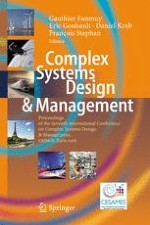This book contains all refereed papers that were accepted to the seventh edition of the international conference « Complex Systems Design & Management Paris» (CSD&M Paris 2016) which took place in Paris (France) on the December 13-14, 2016
These proceedings cover the most recent trends in the emerging field of complex systems sciences & practices from an industrial and academic perspective, including the main industrial domains (aeronautic & aerospace, defense & security, electronics & robotics, energy & environment, healthcare & welfare services, software & e-services, transportation), scientific & technical topics (systems fundamentals, systems architecture & engineering, systems metrics & quality, system is modeling tools) and system types (artificial ecosystems, embedded systems, software & information systems, systems of systems, transportation systems).
The CSD&M Paris 2016 conference is organized under the guidance of the CESAMES non-profit organization, address: CESAMES, 8 rue de Hanovre, 75002 Paris, France.
